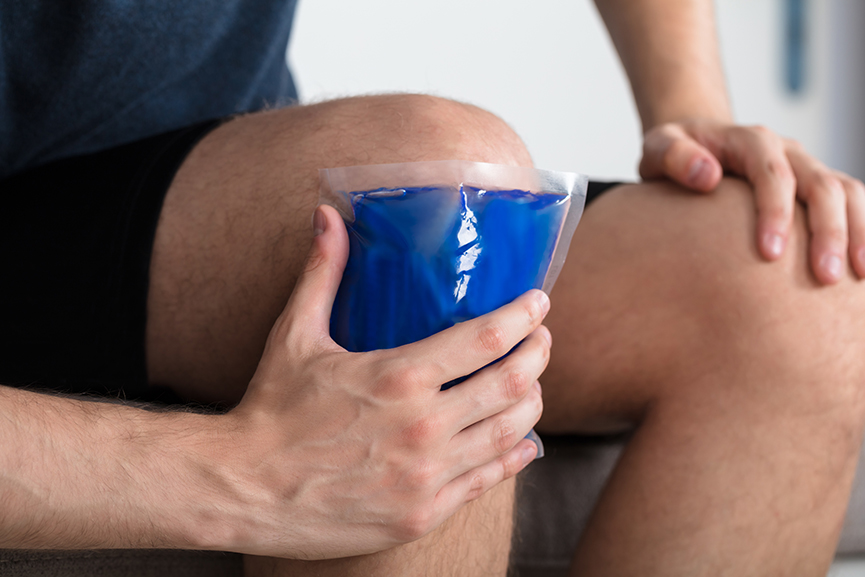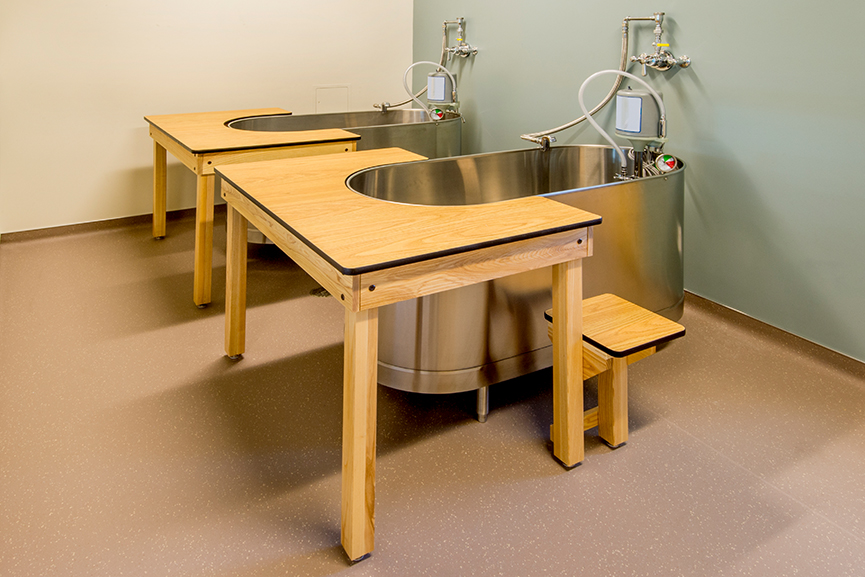Healthpointe Physical THerapy
Modalities

State of the Art Rehabilitative Equipment and Services:
<brManual Therapy
Modalities
Modalities refer to the therapeutic techniques used by physical therapists to promote healing and relieve pain. These techniques include hot and cold therapy, ultrasound, electrical stimulation, and massage therapy, among others.
Modalities are often used in conjunction with exercise and manual therapy to optimize a patient’s recovery from injury or illness. The specific modalities used will depend on the patient’s individual needs and the goals of their treatment plan. Some of the modalities used at Healthpointe Physical Therapy are listed below.
Electrical Stimulation for Muscle Re-Education and Strengthening
Electrical stimulation is a technique used in physical therapy for muscle re-education and strengthening. It involves the use of electrical currents to cause muscle contractions. This technique is particularly useful for patients who have suffered from muscle weakness or injury, and need to regain their strength and range of motion. Electrical stimulation can also be used to relieve pain and reduce inflammation in affected muscles, making it a versatile tool for physical therapists.
Taping
Taping is a widely used modality in physical therapy that involves the application of adhesive tape to the skin to provide support and stability to injured or painful joints, muscles, and ligaments. Taping can be used in a variety of ways, including for pain relief, muscle relaxation, and to improve joint mobility. The most common types of tapes used in physical therapy are kinesiology tape, which is designed to mimic the elasticity of skin, and athletic tape, which is a rigid tape that provides more support.
Taping can also be combined with other physical therapy interventions, such as exercise and manual therapy, to help patients recover from injuries and improve their functional abilities. Overall, taping is a valuable tool in the physical therapist’s toolbox for managing pain, improving function, and promoting healing.
Mechanical Cervical and Lumbar Traction
Mechanical cervical and lumbar traction is a modality commonly used in physical therapy to relieve pain and improve mobility in the neck and lower back regions. This technique involves using a machine or device to apply a gentle pulling force on the affected area, creating space between the vertebrae and reducing pressure on the nerves and discs. This can help to reduce pain, improve range of motion, and promote healing by increasing blood flow and oxygen to the affected area.
The intensity and duration of traction are carefully controlled by the therapist to ensure that the treatment is safe and effective. While it is not appropriate for all patients or conditions, mechanical cervical and lumbar traction can be a valuable tool in the physical therapy toolkit for many individuals suffering from neck or lower back pain.
The intensity and duration of traction are carefully controlled by the therapist to ensure that the treatment is safe and effective. While it is not appropriate for all patients or conditions, mechanical cervical and lumbar traction can be a valuable tool in the physical therapy toolkit for many individuals suffering from neck or lower back pain.
Ultrasound
Ultrasound is a widely used modality in physical therapy for the treatment of soft tissue injuries and musculoskeletal conditions. It uses high-frequency sound waves to penetrate deep into the body’s tissues, generating heat and vibration that can promote healing and reduce pain and inflammation. Ultrasound therapy can also increase blood flow to the affected area, which can accelerate the healing process by delivering more oxygen and nutrients to the injured tissue.
Healthpointe physical therapists may use ultrasound as part of a comprehensive treatment plan, along with other modalities such as exercise, massage, and electrical stimulation, to help patients recover from a wide range of injuries and conditions, including tendonitis, bursitis, and muscle strains.
Paraffin
Paraffin is a modality frequently used in physical therapy to help alleviate pain and improve mobility in joints and muscles. Paraffin therapy involves immersing a body part, such as a hand or foot, into a bath of warm paraffin wax, which is melted and maintained at a therapeutic temperature. The wax provides a moist heat that can penetrate deeply into the skin and underlying tissues, increasing blood flow, relaxing muscles, and reducing inflammation.
Paraffin therapy is commonly used to treat conditions such as arthritis, tendonitis, and sprains. It is often combined with other physical therapy treatments, such as stretching and exercise, to provide comprehensive pain relief and improve function. Overall, paraffin therapy is a safe and effective modality that can be a valuable tool in the hands of a skilled physical therapist.
Cryotherapy (Cold Packs/Contrasts Baths)
Cryotherapy is a physical therapy technique that involves the use of cold packs or contrast baths to relieve pain, reduce inflammation, and promote healing. This therapy works by constricting blood vessels and reducing blood flow to the affected area, which in turn reduces swelling and inflammation. Cold packs are typically used for acute injuries such as sprains and strains, while contrast baths are often used for chronic conditions like arthritis.

Hydrotherapy/Whirlpools
Hydrotherapy is a type of physical therapy that uses water to treat a variety of conditions. This therapy can take many forms, such as hot and cold baths, showers, and whirlpools. Hydrotherapy can help to relieve pain, reduce swelling and inflammation, and improve range of motion. It can also be used to promote relaxation and reduce stress. This type of therapy is often used in conjunction with other treatments, such as exercise and massage, to help patients achieve their rehabilitation goals.

